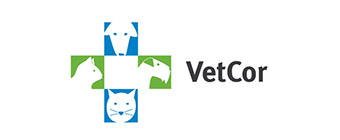IP vs. TDM - A Brief History
This man started it all when he uttered those famous words “Mr Watson — Come here —I want to see you” thus changing the way in which we communicate. Flash forward 133 years and we now combine both voice and data which is easily transmitted worldwide via the Internet.
The Bell Regional phone companies controlled the majority of the market with its federal monopoly and practice of charging higher rates for business service to subsidize the cost of providing service in the rural markets. Business’ only option for telephone equipment was to rent from the phone company and the selection of product was limited. This changed in 1984 with Judge Harold Green’s divestiture decree which allowed AT&T to enter the lucrative data field and in exchange had to split off the regional phone companies and give up the “Bell” trade name.
This brought about a great deal of change in the business market. A number of newcomers brought new technologies to the market and sold their product through a new channel of resellers known as Interconnects. These Interconnects handled all the street sales, installation and maintenance and competed with the phone companies. These early new technologies were difficult to understand, install and program and a highly trained dealer base was a must.
Today’s technologies are fading the borders between voice and data communication and end users are becoming more savvy in terms of understanding the technology and have the ability to handle more of the equipment themselves.
What is TDM?
Time Division Multiplexing is the technology used by telephone systems for the past 30 years. It allows multiple signal types to travel over the same path. In the instance of an electronic key system the voice and data signals share a single pair of wires.
TDM had a real advantage over the older electro-mechanical 1A2 system because you could run a small cable to each phone. The disadvantage is that you can only have a phone within the direct reach of a cable run. With these systems the central controller usually holds all the intelligence and the telephones (end points) are generally dumb devices, meaning you can unplug one and replace with another of the same type without losing any of the programming. With this central processing you need someone to physically move a wire if you want to move the phone from one office to another.
TDM system will continue to sell well in this market for many years or until the price of IP components become so inexpensive it will be too costly to build more TDM gear.
What is IP?
Internet Protocol is the used to send data packets from one computer to another. It is based on an IP addressing system which routers understand and forward your packets to the desired location. The common use is obviously the Internet, but also consider that your e-mail and your inter-office communications uses the IP protocol. There are some real advantages of IP; you can plug your phone in anywhere on the LAN and it works, depending on the system you can take your phone home and plug it into your broadband connection and it works.
You can connect multiple locations together to act in unison as a single system. Since everything is a data packet many new features have and will continue to be added. Presence gives you the ability to send calls elsewhere depending on what your are doing or even depending on who calls you. Receive your voicemail messages as .wav files in your e-mail and the list goes on.
One of the most compelling reasons why we like IP is that it brings the telephone system into the realm of self-maintenance and removes the need to roll trucks anytime a phone system acts up. IP based hardware has a much longer life expectancy than TDM as often TDM feature upgraded require a major hardware upgrade as well. This is usually not the case with IP.
What is SIP
Session Initiation Protocol is a standard used along with the IP protocol to make devices work on any SIP compliant system. There are two primary uses for SIP, endpoints and trunks. The Allworx server is SIP 2.0 compliant which means you can connect any SIP 2.0 compliant telephone. This is rarely done as Allworx has extend the SIP features set by a factor of 3 to give it feature richness. If you were to connect any other SIP telephone to the Allworx you would only be able to make basic calls and transfer. Nothing else is guaranteed.
The second and fastest growing us of SIP is to bring telephone lines directly into a SIP compliant server. You create a SIP Proxy to communicate with The SIP trunk provider and all access to lines is via data packets; you never see a telephone man, you never see a pair of copper. With our SIP package there is no wait to get phone lines, we simply turn them on. The number of lines you receive is only limited by the bandwidth coming into your site. With SIP trunks we can give you virtual numbers. Say your office is in NY and you do business in LA, Dallas and London. We can actually give you local lines for all of these locations so your customers call you on a local number. Talk about looking like you have a global footprint!
IP and SIP bring a great deal of flexibility to your business not to mention save you money. Check out our 4 lines for a year for $99 package with the Allworx system. 4 lines would typically cost $120 per month from the phone company and you pay for long distance on top! Fix your cost for the first year and continue saving over the years with unlimited calling bundles.








